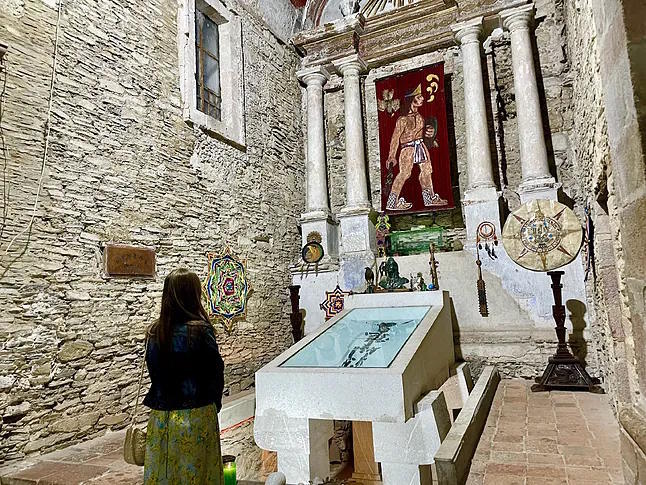Every February 28, Mexican flags fly at half-mast throughout the country in honor of him, Cuauhtémoc, the last Aztec emperor. Or rather, in commemoration of the anniversary of his death on that same day in 1525 at the hands of Hernán Cortés' troops, who burned his feet and hands after four years of captivity. Throughout that time, the Spanish conquistador was determined to make the successor of Moctezuma —there was another ruler in between, his brother, but he only lasted 80 days due to smallpox— and staunch defender of the Aztec capital, Tenochtitlán, reveal where he was supposedly hiding his treasure in the form of tons of gold.
Cuauhtémoc never confessed, sealing his own fate, as the priests who saw him born 29 years earlier during a solar eclipse had already foreseen, a fatal prelude to what was to come. Nevertheless, he has passed into posterity as one of Mexico's national heroes, to the extent that his tomb, located in the town of Ixcateopan de Cuauhtémoc —the town was renamed in his honor in 1950, a year after the discovery of his remains—, 200 kilometers from the country's capital, is a pilgrimage site for thousands of people every year. Even more so in February, "when a massive celebration takes place with dances, ceremonies, and rituals attended by dancers from all over," says Esther Hernández, tourism manager of the municipality, one of Mexico's 177 magical towns, those that exude charm, tradition, and history in abundance.
This town, miraculously nestled among mountains and cotton fields (the name Ixcateopan means that in Nahuatl: on the divine cotton), is one of the three in the state of Guerrero along with Taxco, a 45-minute drive away, and Zihuatanejo, already on the Pacific coast. It has plenty of reasons for its title, as it is one of the few places in the world whose streets have been paved with marble from nearby quarries. Additionally, it boasts a well-preserved colonial style, filled with elegant whitewashed facades, red stucco details, thatched roofs, charming churches, and pleasant gardens.
Not to mention the Sunday tianguis at the Central Plaza, the market that brings together artisans, farmers, and ranchers from the area to sell their products amidst blue corn tortillas and chilate drinks, an ancestral local beverage made with water and cocoa. Nevertheless, the most visited spot in the so-called "marble town" is the church of the Assumption of Mary, where Cuauhtémoc's tomb is hidden. The scent of nopal, an aromatic native plant resin, permeates the 16th-century room as visitors make their way through floral offerings, paintings of pre-Hispanic allegories, musical instruments, and religious motifs to the mausoleum. The design was entrusted to the artist Diego Rivera, "who visited the site to create a composition of the emperor; he was the one who placed his bones on a sheet drawing his silhouette," explains historian Abel Rodríguez in front of the homeland altar.
Initially, there were doubts about whether the remains found in the church by the archaeologist Eulalia Guzmán (a true pioneer) in September 1949 were really those of Cuauhtémoc. Scientific studies were inconclusive, but a surprising 14th-century document tipped the scales in favor. "The Franciscan priest Toribio de Benavente, known as Motolinia, kept a manuscript indicating that the king of the Aztecs had been buried here, along with other details about his life, as it is also believed that he was born and lived in the town until the age of 10 with his parents and siblings," adds Rodríguez. The memorial was also found in 1949 after being hidden for over 400 years by a local family, the Juárez.
Research continued in the area, where an important archaeological site was discovered on the outskirts, where cotton was grown, sacrifices were made around a circular altar, the god of the wind was worshipped, and warrior costumes were stored. Cuauhtémoc's could very well have been one...
Aeromexico (www.aeromexico.com) offers direct flights from Spain to Mexico City, from where you can reach Ixcateopan de Cuauhtémoc by car or bus, about 200 kilometers away. Check promotional offers on the airline's website.
